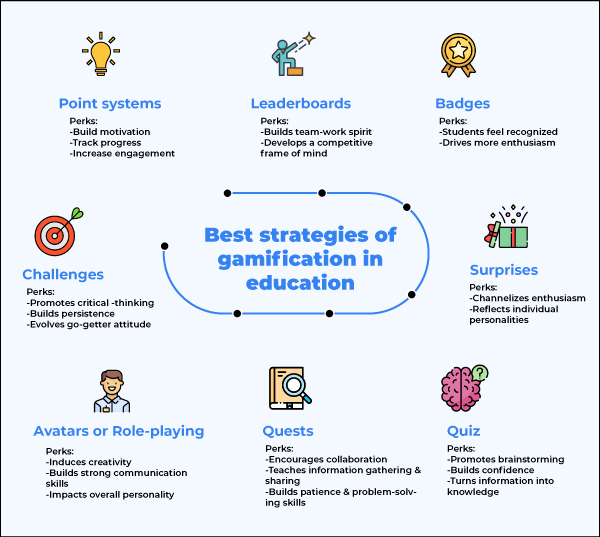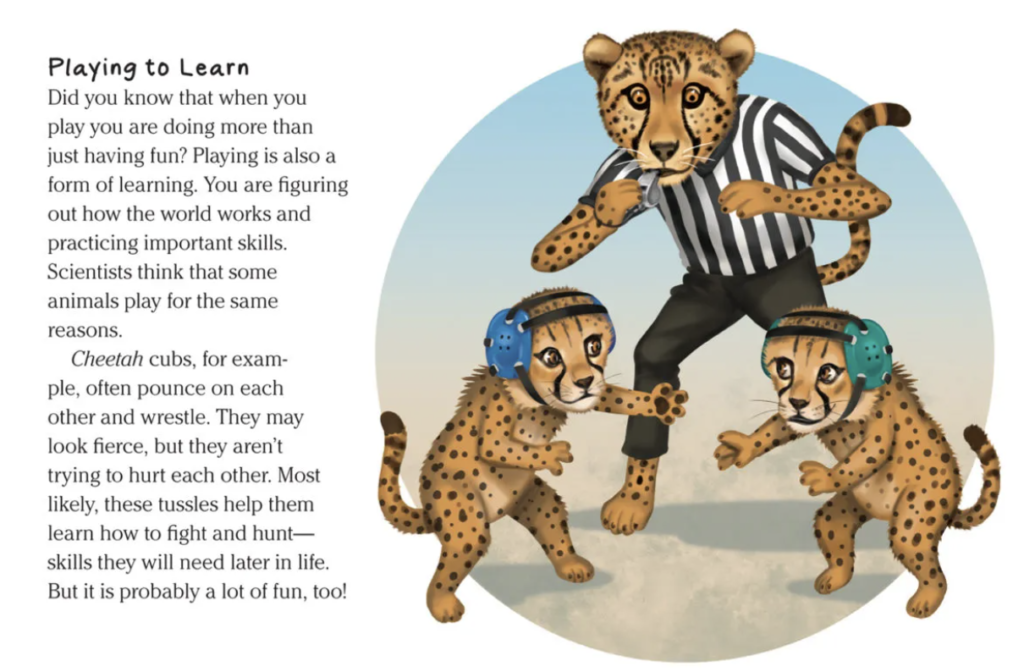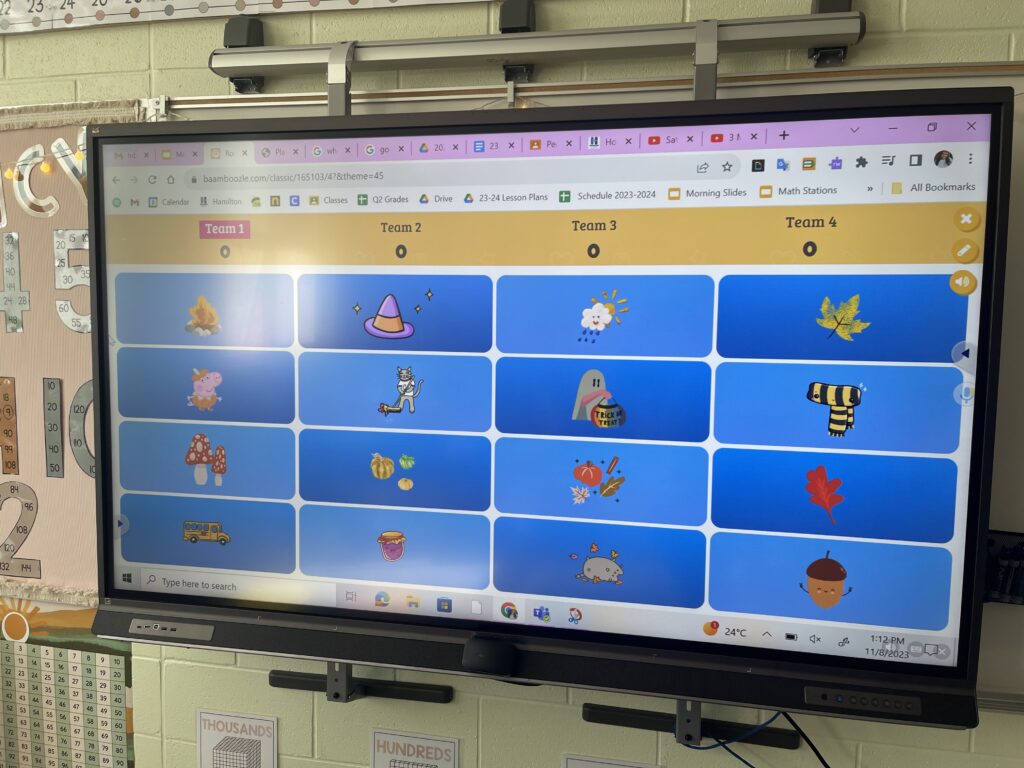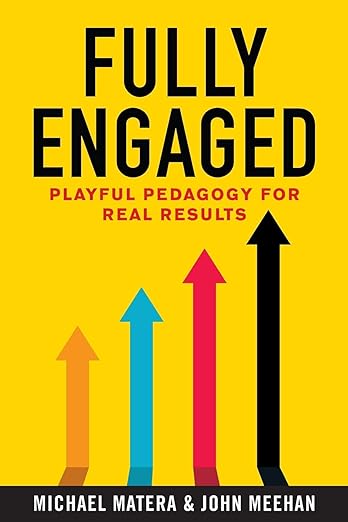
Hello fellow readers,
I hope this post finds you well! I can’t believe this semester is wrapping up- writing these blog posts has been one of the highlights of my Grad School journey at Miami University- I graduate in just a little over a month! I have learned so much about becoming a better classroom teacher and will continue to bring my newfound knowledge and passion for innovative classroom strategies in years to come. This week, I am ecstatic to share a little bit about gamification in the classroom. That’s right- engaging students through gamifying our curriculum! We have been reading an incredible book over the past two weeks that gave me so many easy-to-use strategies to add games to my classroom- Fully Engaged: Playful Pedagogy for Real Results by Michael Matera and John Meehan. If you are interested, click on the picture on the right for the Amazon Link! I can’t write this blog post about games without playing a game with you as a reader…
Throughout this blog post, you will see certain letters that are GREEN. Write them down as you read. At the end of the post, I will tell you a math-related joke (fellow math teacher here). Your GREEN letters- in the order that you read them in the blog- will be the answer to the joke! Ready? Go!
How does Gamification/Gaming enhance the learning experience?

- Students are engaged and excited to learn: This is probably one of the biggest driving forces as to why gamification of the curriculum is such a game changer in the classroom. Moving away from the traditional model of education (also known as Paulo Freire’s “Banking Model” of education), adding gaming into your daily classroom routines gets students excited to learn. Reflect on this: how often in the past month have you had a conversation with colleagues about students being disengaged, not completing work, or being bored in your class? A wise professor in one of my undergrad teaching courses once told me: If your students aren’t listening, you have to think: is what I’m teaching worth listening to? It’s a hard pill to swallow, I know. We as educators have to evolve with society- our students get excited about video games, imaginary characters, and good stories- so why not bring that into our classroom? Students will be engaged and you won’t have to worry about behaviors as much anymore! When students are excited about the work they are doing, their motivation to complete it rises. More engagement = more learning. (Being more excited to go to work on a Monday is an added bonus!)
- For a great example of engagement, check out this blog post by Kasandra Singh, where she talks about how she gamified her 5th grade classroom!
- Fosters collaboration: Collaboration is one of the key 21st-century skills that employers are looking for. Forget about work, collaboration is just a key skill to be a good human. Do our students really have enough time to collaborate? No, working on worksheets with a partner doesn’t count. I’m talking about actual, thought-provoking, collaboration. Gamifying education and allowing students to embark on projects, challenges, and quests gets them not only talking but solving problems together! 🎵 I get by with a little help from my friends 🎵… right?
- Enables student choice: Point blank- modern classrooms just don’t have enough student choice. Gamifying education, such as the use of choice boards and team quests, allows students to have a say in the way that they present what they have learned. It gives them a sense of agency and teaches them that their choices matter. Let’s move away from stress-inducing tests and timed essays and towards choice presentations- students can record videos, make a comic strip, or even digital slides to show what they have learned. If you are interested in learning more, check out this blog post by Edutopia.
- Creativity is embedded: I have to talk about good ol’ Minecraft for a second. As an older sister with a younger brother who is -quite literally- obsessed with Minecraft, I have learned quite a lot about it over the years. Minecraft allows you to create your own world, learn about natural and man-made resources, and interact with others. Why do kids love it so much? Because they get to be creative. We are all innately creative creatures, but spending 8 hours a day in a school that sucks it out of you is, in my opinion, one of the biggest issues in education today. Let’s let our students be creative in the way that they learn and present their learning best by adding games to our daily classroom routines. P.S. Did you know that Minecraft has an entire website for educators? It even has standards-based challenges that students can use to deepen their knowledge. It changed my life.
Check out some easy-to-implement strategies for gamification in education:

TCE Threshold Concepts to Gamification/Gaming:

- Both teachers/students have empowerment/agency: Teachers are specialists in presenting materials in the best way that reaches their students. It is very important for educators to be constantly learning how to better their craft and have the agency to do so. In some districts, this is easier to do than in others. High stakeholders set parameters for the amount of freedom teachers have in their classrooms. Some choose to use highly scripted curriculums that are paper-pencil worksheet centered, while others trust educators in the way that they teach standards. Teachers should feel empowered to do what is best for our students, their engagement levels, and their ownership of learning. Likewise, students need to feel a sense of ownership in their education. Gamification is a very student-centered model that allows students to feel empowered in the way that they learn and present their learning.
- Teaching and learning honor people’s full humanity: Let’s get away from the rhetoric that playing at school is a bad thing. Animals play to learn. It’s a great thing! Play is a natural part of humanity. Bringing play into the classroom not only increases student engagement but more importantly a LOVE for learning. Learning is an incredible thing, so why do younger students love school but hate it by the time they are in 5th grade? Less play takes place.
My experience this week:
This week in my 3rd-grade math classroom, I chose to add the game of Bamboozle into one of my math lessons. I have a LONG way to go when it comes to gamifying my classroom. I have a lot of good ideas for what I want to do, but these things take time. I am going to continue trying out different games each week until it becomes a daily practice. I want my students to love coming into my classroom each day!

Bamboozle is a free website that you can cast on your smartboard/screen in your classroom. It has an awesome paid version that I am *very tempted* to purchase with many more game options, but this week I just used the free version. The best part about it is that students don’t need to log in on their computers so it takes zero classroom time away for setup. There are already created games by other educators that you can search- I found the one I wanted to use in less than a minute! It is essentially like Jeopardy- students work in groups to answer questions and get points for the right answer. There is a twist! Depending on what image students choose, they can earn extra free points, steal points from other groups, or lose points! The absolute thrill that students get when they choose an image and wait for what will pop up brought my classroom engagement to 200%! Seriously, every single student was focused and ready to answer questions in this friendly competition game. Speaking of competition, winning and losing is a VERY important social-emotional skill to learn as a young child and is a gateway for some great conversations.

We were learning about Rounding to the Nearest 100, so I used this Bamboozle game at the end of my lesson. Students knew that we were playing a game at the end if we could get through the entire Tier 1 lesson, so this was a great incentive for focus! I found this to be incredibly successful overall because students were engaged, working together to solve problems, laughing, and genuinely having fun! One of the challenges was that a few students were still struggling with the rounding concept and they let their teammates take over and answer questions. When I do this game again in the near future, I am going to ask for one student to be the recorder and give students talking chips to make sure everyone has the opportunity to put their input in and participate. This experience showed me just how much my students enjoy games and how easy they are to implement into my math lessons!
You made it to the end of the post! Have you been keeping track of the GREEN letters? In the order that they appear, they spell the answer to this math joke!
What did the zero say to the eight?
____ _____ _____ ____ _____ ______ _____ ______
As always, thanks so much for reading. It’s been an absolute pleasure!
Cheers! -Anya Nikolaenko


Hello!
I absolutely love the hidden message in this – you are such a creative writer. I also really appreciate how your post was exclusively focused on math. Although gamification resources in general are helpful, it really focused your response in and made it very relevant. I found your graphic really helpful in summing up the benefits of gamifying a classroom – it appeals to use visual learners!
I’ve never used bamboozled – and what a huge plus that students don’t have to be logged in. We lose so much engagement/class time to the minute details, so that is a huge plus! Your comparison of animals playing to have fun is awesome!
Great read.
Answer: Nice Belt. Cool engagement tool:)
I have not used Bamboozle, but after your post, I will definitely try it. The trouble with groups is, often times, one or two people take over the group and the others simply sit. To avoid this, you can give jobs, rotate a whiteboard, make a rule that a new person needs to be the speaker each tinme, or use a spinner to call on particular students. I like to set the scene early in the year that it is okay to make mistakes or not know the answer. I remind them that we will work through it together because my goal is that they learn something not simply regurgitate the right answer.
Great post!
Thats the right answer! I am so glad that you enjoyed reading my post! I have the same issue with grouping in my classroom too! The spinner is an excellent idea and I will for sure be using this!
What an awesome post! I enjoyed reading your thoughts and then also checking out baamboozle for myself. Instead of paying for the full site I would recommend also checking other sites out. If you like this one I would also suggest 99math. I have not yet used it, but I have looked into it and plan to use it. There is a large variety of activities to keep students engaged. I’ve noticed with my students that when we find a great game, if I overuse it we don’t always get out of it what I was hoping. Then can tend to get bored so instead building a repertoire of different games to pull out at different times. Thank you for sharing your experience, I look forward to trying baamboozled out!
Thank you so much for commenting! I have only tried out 99 math a few times with my students (and each time they LOVED it!) I would love to set up their own accounts so they can do it during the technology station for a fluency warm-up! I think it’s super engaging! I completely agree- we should rotate the games that we play so that students won’t get bored of it. Great feedback, thank you!
I completely agree that gamification provides a unique opportunity for students to collaborate and fosters autonomy amongst them. I also have younger siblings who love minecraft, and I had never heard of the educators website for this. Thank you for this resource!
I used Baamboozle every Friday for a fun review because my students love it as well! I would recommend not buying it because around the holidays they unlock certain game modes for free, and I try to play them as much as possible while they’re available. My suggestion would be for each student to rotate being the one to hold up the answer. For example, in a group of 4, all students would work together to get the right answer on a board. Then when you call on someone from the group, each student has worked together to get the answer and you can ensure all of them are learning.
I am glad that your students were engaged in the lesson- it is definitely one of my favorite resources!
Thank you so much for your comment! What an awesome idea for rotating calling on someone different from the group! Also, I am so appreciative of your insight about Bamboozle and how they unlock certain game modes for free around the holidays! This is AWESOME news!